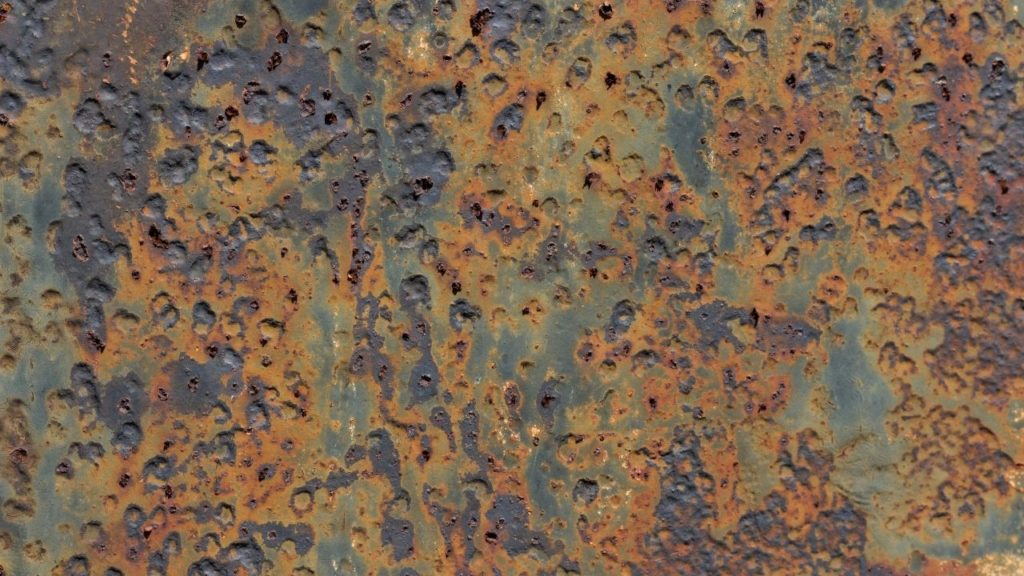Acid Rain has become a pressing problem with the ever-increasing rate of air pollution. In this blog, we will have a short discussion on acid rain, its causes, effects and how to prevent it.
What is Acid Rain ?
Acid rain, also known as acid deposition, refers to any type of precipitation that contains acidic components, such as sulfuric or nitric acid, and falls to the ground in wet or dry form from the atmosphere. This can include acidic rain, snow, fog, hail, or even dust. With a pH of 5.6, normal rain is mildly acidic, whereas acid rain has a pH of 4.2 to 4.4.
Firstly, we have to understand what causes acid rain.

Acid Rain Causes
Acid rain occurs when sulfur dioxide (SO2) and nitrogen oxides (NOX) are released into the atmosphere and carried by wind and air currents. SO2 and NOX combine with water, oxygen, and other molecules to form Sulfuric and Nitric acids. After mixing with water and other things, they fall to the earth.
In the gas phase hydroxyl radical oxidizes sulfur dioxide by the following intermolecular reaction:
SO2 + OH· → HOSO2·
HOSO2· + O2 → HO2· + SO3
In the presence of water, sulfur trioxide (SO3) gets converted to sulfuric acid rapidly:
SO3 (g) + H2O (l) → H2SO4 (aq)
Nitrogen dioxide reacts with OH and forms nitric acid:
NO2 + OH· → HNO3
While some of the SO2 and NOX that create acid rain come from natural sources like volcanoes, the majority of it comes from the combustion of fossil fuels. The following are the principal sources of SO2 and NOX in the atmosphere:
- Burning of fossil fuels for power generation- Electric power generators are responsible for two-thirds of SO2 and one-fourth of NOX in the environment.
- Vehicles and heavy machinery
- Oil refineries, and other industries
Also read: Air Pollution Causes – A Comprehensive Guide
Forms of Acid Deposition
Depending on the presence or absence of precipitation, there are 2 types of acid deposition. They are:
Wet Deposition
Acid rain is most typically associated with wet deposition. Sulfuric and nitric acids generated in the sky mix with rain, snow, fog, or hail to fall to the ground.
Dry Deposition
In the absence of moisture, acidic particles and gases can settle as dry deposition from the atmosphere. Acidic particles and gases may swiftly settle on surfaces (water bodies, vegetation, and structures) or react with larger particles in the atmosphere, posing a threat to human health. When stored acids are washed off a surface by the next rain, acidic water pours over and through the ground, harming plants and fauna including insects and fish.
Now we have understood how acid rain forms and its types. Next, we shall move to its effects.
Acid Rain Effects
Acid deposition can impair biodiversity and lower the pH of surface waters in acid-sensitive areas. It weakens trees and makes them more vulnerable to other stressors such as drought, extreme cold, and pests. Acid rain causes the degradation of limestone and marble buildings and monuments by contributing to the corrosion of surfaces exposed to air pollution.

Effect on Aquatic Environment
Acid rain either falls directly on aquatic bodies or washes off into streams, rivers, and lakes as runoff from forests, highways and farmland. Acids accumulate in the water over time, lowering the overall pH of the water body.
Aquatic plants and animals require a pH level of around 4.8 for their survival. If the pH falls below that, the environment becomes unfriendly to aquatic life’s survival. Most fish eggs will not hatch at pH levels below 5. Adult fish can also die if the pH is too low.
High acidity, particularly from sulphur deposition, can enhance the conversion of elemental mercury to its most lethal form, methyl mercury, a neurotoxin. This conversion occurs most frequently in wetlands and water-saturated soils, where low-oxygen situations are optimal for bacteria to produce methyl mercury.
As methyl mercury goes up the food chain, it accumulates in organisms at each trophic level through biomagnification. Finally, it reaches inside the body of human beings and can cause damage to the central nervous system.
As a result of atmospheric deposition and land runoff, many lakes, estuary, and coastal marine systems receive excessive nitrogen. Nitrogen is a major plant nutrient and high nitrogen concentration accelerates the growth of aquatic plants and algae. This nutrient enrichment of water bodies is eutrophication. Later it leads to the death of a water body.
To know more details about eutrophication and understand how this process can kill the entire aquatic life in a water body check out our blog Eutrophication – Definition, Causes, Effects and Control.
Effect on Soil
Acid rain has a significant impact on the chemistry and biology of soils. It can alter soil chemical compositions and soil pH.
For the biological activity to continue, the soil must maintain an optimal pH level. When acid rain seeps into the soil, it raises the pH and can harm or reverse the biological activity of soil microorganisms. As a result, sensitive soil microorganisms that are unable to adjust to pH fluctuations die. High soil acidity also denatures soil microbial enzymes.
Acid rain’s hydrogen ions, drain the soil of critical minerals and nutrients including calcium and magnesium. Acid rain also depletes the soil of essential plant nutrients and buffers, such as calcium and magnesium. It can release aluminium bonded to soil particles and rock in its deadly dissolved form.
Also read: What are Water Pollutants? – Definition, Sources and Types
Effect on Buildings and Architecture
Acid rain can cause damage to structures, historic monuments, and statues, particularly those built of calcium carbonate-rich rocks like limestone and marble. Rain reacts with calcium compounds in the stones to form gypsum, which subsequently flakes off.
CaCO3 (s) + H2SO4 (aq) ⇌ CaSO4 (s) + CO2 (g) + H2O (l)
The consequences of this are typically seen on antique gravestones as acid rain can entirely erase the inscriptions. Corrosion of metals, particularly iron, steel, copper, and bronze, is also accelerated by acid rain.
Taj Mahal suffered serious damage and discolouration due to acid rain. The building lost its lustrous white colour and is slowly turning yellowish. This is due to the conversion of calcium carbonate in the marble to calcium sulphate. This slow corrosion or degradation of marble by acid rain is known as Marble Cancer.
Ocean Acidification
In the shallower seas of coastal regions, acid rain has a greater impact. Acid rain can lower the pH of the water, causing ocean acidification, which makes it more difficult for coastal organisms to build the exoskeletons they need to survive. Since calcium carbonate, a key component of the limestone skeleton, dissolves in acidic (low pH) solutions, the coral’s limestone skeleton is particularly susceptible to pH changes.
Solutions to Acid Rain
It’s true that acid rain has already caused serious damage to both the environment and man-made structures. The main culprit behind acid rain is air pollution. Hence, if we can control acid rain, we can prevent acid rain as well. To know more about the methods to reduce air pollution, check out our blog Air Pollution Control measures – Top 9 Air pollution control devices. Let’s look at how we can prevent acid rain and reduce its damaging effects.
Cleaning of Exhaust pipes and smokestacks.
Combustion of fossil fuels including oil, natural gas, and coal produces nitrogen oxides (NOx) and sulfur dioxide (SO2), which are the primary contributors to acid rain. The primary cause of SO2 emissions is coal combustion, and that of NOx emissions is fossil fuel combustion.
Washing coal, using low-sulfur coal, and using “scrubbers” can all help reduce SO2 emissions. Scrubbing, also known as flue-gas desulfurization (FGD), is a process that removes SO2 from chimney gases chemically.
Similarly, the use of catalytic converters reduces NOx emissions from fossil fuel burning in automobiles. The development of cleaner-burning gasoline is also an approach to reducing NOx emissions.
Liming
Liming, or the application of limestone or lime to lakes, rivers, and brooks, is a procedure that individuals can utilise to restore the damage caused by acid rain. Lime is chemically Calcium Carbonate which is a base. It can react with acidic water and neutralise it. Thus, lime can buffer acidity in acidic surface waters and keep the water pH at its ideal level.
Liming is an expensive procedure that must be repeated. Furthermore, it only provides a temporary remedy at the expense of addressing the larger issues of SO2 and NOx emissions and human health risks. Nonetheless, by enhancing chronically acidified surface waters, it aids in the restoration and survival of aquatic life forms.
Use Alternative Energy Sources
Aside from fossil fuels, there are a variety of other energy sources that may be used to generate electricity. Wind energy, geothermal energy, solar energy, hydropower, and nuclear power are among them.
Instead of using fossil fuels, these energy sources could provide effective electrical power options. Greener energy sources, fuel cells, natural gas, and batteries can also be used to replace the use of fossil fuels. All energy sources have environmental and economic costs and benefits as of today. The best option is to use renewable energy that will protect the environment.
Shall we wrap up?
Conclusion
In this blog, we have seen the definition, causes, and effects of acid rain and methods to prevent it. Acid rain is an issue for everyone, not just those who live near these sources because the wind can carry SO2 and NOX across great distances and borders. It’s very crucial that we take the necessary steps to prevent acid rain and reduce its harmful effects on man and the environment.

